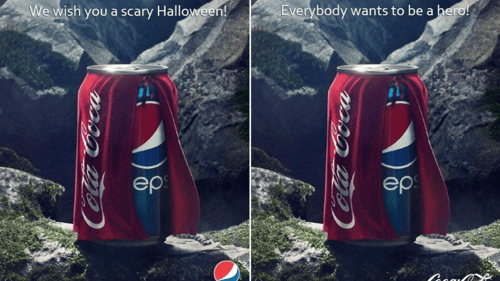7 content marketing trends you can't ignore in 2020

Posted by Karen Hesse
November 12th, 2019
Trends in content marketing are about as finite as the text in a word document; easily erased with the help of a button.
But every year, there are a few trends that earn their keep on the page. They’re ideas that are a little too big (and a little too profitable) to ignore. They make every content marketer nod in agreement as soon as it hits the airwaves.

Will these ideas change your content marketing strategy overnight, bringing good fortune to every element they touch? Probably not – sorry, we’re not going to lie to you like some other 2020 content marketing trends articles might.
But they will have a radical impact on the hows and whys of your future project and campaign launches. Think of our 2020 content marketing trends as the gun instead of the silver bullet.
We won’t bore you with any more long lines of introductory prose (unless, you know, you’re into that sort of thing). Here are the seven 2020 content marketing trends that we’re keeping in mind for our clients in the new year:
1. Marketing integration further improves accuracy of ROI
For marketers, the holy grail has always been about being able to track and show a tangible Return On Investment (ROI) against the work we do. Yet it’s something we continue to struggle with as an industry, according to the data from our latest Irish Content Marketing Report.
But with the growing popularity of HubSpot, Marketo, Salesforce and every other tool in the marketing ecosystem, we are moving towards transparency with a more robust content marketing ROI and attribution model.
“As we head into 2020, we’ll see that further integration of marketing solutions will lead to better-defined ROI – it just makes too much sense not to happen,” Brendan McGinley, Head of Client Services at 256, says. “What it’ll really give marketing teams is more accuracy when they’re tracking the impact of the campaign, which will help them correlate costs with performance.”
Content marketing remains unique in that it’s one of the only marketing tactics that actually compounds over time, delivering year-on-year results that live long after the initial investment has been made. Being able to track that progression will bolster the case for future content investment.
2. Instagram becomes a fully functional e-commerce platform for business account users
We’ve all had that moment where we saw an outfit and just had to have it.

Anyone who spends a lot of time on the platform knows that wasn’t always possible. Then, along came Instagram Checkout. The e-commerce functionality was what every business account user needed: a platform to advertise and sell, all at the same time.
Talk about efficiency.
But there was just one problem on launch: Instagram Checkout was available only to a small number of US-based businesses. That stifled its expansion and left European retailers hanging out to dry.
Instagram Checkout is far too useful to remain limited and will become a universal e-commerce platform for business account users in 2020, replacing the need for websites dedicated to digital shopping. It’ll be a massive boon to companies that found success with their social media strategies on the platform.
“This is the moment all social media marketers have been waiting for,” Gavin Lawlor, Social Media Specialist at 256, says. “A full-funnel social platform that attracts and converts with no need for separate attribution reporting. Instagram is already a powerful marketing channel – removing the extra step of off-channel conversions is going to take it to the next level.”
At its core, Instagram Checkout is built on the same foundational qualities that many content marketing strategies strive for. It simplifies the user’s journey by keeping them on one platform, which lends itself to brand’s overall appeal. The user journey it supports (read: a simple one) will be a critical element for businesses to have moving forward within an increasingly crowded retail ecosystem.
3. Authentic brands latch onto sustainability
You might not see it up there with gold and silver on the international markets, but trust is one of the most valuable commodities a business has access to nowadays.
Let’s put it another way: Most of us do business with Facebook, but do any of us really trust the company? After being embroiled in scandal after scandal for its misuse of its users’ data, it’s tough to really buy in to the idea that it always has its best foot forward.
Facebook is the content marketing world’s example of how consumers can love a product but distrust a brand – and the company has already seen 15 million users leave due to the backlash, according to Edison Research.
Most companies can’t afford to lose 15 million customers. So, what do we take away from all of this? Consumers are looking for authentic brands, and yours better be one.
Authenticity comes in many shapes and sizes. In an era of fake news and social media influencers who don’t always declare their sponsors, being truthful and honest in everything the company says and does is a solid first step. In reality, brands that offer emotive, relevant and truly useful content – you know, the type of content that offers value to customers – will perform best.
“The pure beating heart of content marketing is to offer real value with a sincere voice to your audience, because that’s what consumers respond best to,” Paula Connor, Chief Content Marketing Officer at 256, says. “My advice to marketers developing their 2020 content strategies is to avoid creating high volumes of content assets with little substance ‘just because’. Instead, get out and listen to real customers – that investment of time and research will pay off when you start creating high-performing content that converts.”
One area that marketers can look to build brand trust in is through sustainability and environmentalism. Consumers are increasingly interested in finding out what their impact is on the environment. That impact is a direct result of the goods they consume.
Do you see what we’re getting at here?
Hygiene and hub content is a great way to demonstrate your company’s efforts towards sustainability. One example of this is travel brands offering customers the opportunity to offset their carbon footprint.
4. Augmented Reality will change the way we shop on Instagram
Augmented Reality (AR) has been in the line-up of content marketing trends since Netflix was still delivering DVDs, but is 2020 finally its year?

The majority of consumers’ smartphones now have powerful processors and cameras, and businesses like Instagram are taking advantage of that. The social media platform is now piloting its Spark AR technology, which is integrated with its Checkout e-commerce platform, to give shoppers a whole different version of ‘try before you buy’.
Logistics departments at companies evolved quickly to facilitate returns in the e-commerce era, but AR technology might help alleviate some of those concerns. Glasses and cosmetics companies are some of the first to allow shoppers to see how the product looks on their faces before they pay for it – right from their phones.
“Quick and easy returns were a good start for e-commerce companies, but I think that lifecycle is even a bit too long for the modern consumer,” Nicole Zanellato, Lead Generation and Customer Success Manager at 256, says. “Why not take advantage of what’s already in peoples’ hands? AR will redefine what it means to try before you buy.”
Instagram is trying to own the e-commerce lifecycle and companies would be smart to quickly adapt. Consider this potential interaction: A friend sends you a pair of sunglasses that’s your style. You try them on and agree – you’re absolutely fab and the glasses suit too. At once tap of the finger, they’re in the mail and on the way while you go back to scrolling for memes.
In that small ecosystem, companies are able to market, connect with their audience and sell their product. And they can do it all in one very short lifecycle.
5. Voice search gets voice ads
We all thought artificial intelligence would be a life changer by this point in time, helping us with our most complex and trivial tasks during the day.
Instead, it has just given us judgy looks.

OK – jokes aside, AI has been massively influential in the way we work and live. While it’s not yet at the point where we have a robotic butler waiting on our every need, it’s certainly found itself in the mainstream. One way it has become a household name (or a couple of names) is with virtual assistants.
You can call it Alexa, Siri or Cortana; the point is that consumers are calling its name more often than not. And by 2020, ComScore believes that half of all online searches will be driven by voice search.
With search traffic moving away from the web and into consumers’ living rooms, is there a chance we see ads for voice search? If we were betting on it, we’d think there’d be pretty good odds for it.
“You might have already noticed a Google ad featuring a product that you and your friends were just talking about,” Zanellato says. “That’s it: the search for voice is already a reality. It’s just a case of when the functionality will be available for users to explore.”
Google wants to maximise the revenue it gets from advertising and with half of the consumer base slipping away from their reach, we expect the company to figure out a way to insert PPC or paid ads into voice search results.
How will they do it without making them intrusive? Sure, we’d be worth billions if we knew.
6. Brands take inventory of their voice-activated content
Robots aren’t exactly intelligent enough yet to be solely responsible for getting us our daily caffeine fix.

But our smartphones can certainly point us to the best place to get a coffee. In fact, names like Alexa and Siri are increasingly being relied on by people to get them the answer to their questions.
Smartphone speaker ownership has grown 78 percent in the last year in the US, according to Edison research. Soon, people will no longer be the target audience for content strategies – virtual assistants will.
While ownership is growing on the consumer end, adoptions lags considerably among businesses.
“Voice is a megatrend, yet just 5% of brands in the US are actively developing a voice strategy,” Karen Hesse, CEO of 256, says. “As a very basic starting point brands need to focus on utility and produce really practical hygiene content that answers their customers’ questions. It’s surprising how many brands are missing this opportunity.”
Voice has been trendy since the beginning of the decade – and its low adoption rates show that people still aren’t paying attention. But with nearly everyone having a virtual assistant in their pocket, it seems like this will be the year that companies overhaul their content strategies to optimise for voice search.
Completing a voice audit across all the major devices like Alexa and Siri is the first step to understanding where your content comes up short and identify gaps where it can improve to meet market demand.
7. The eBook dies a noble death
Who doesn’t love a good eBook?
We’ve got eight of them on our own website. Salesforce has 13 in its resources section. HubSpot has a jaw-dropping 165 eBooks (seriously HubSpot, you’ve earned a break).
But who has time to read all of these great eBooks? Well, the truth is that not many of us do.
EBooks are incredibly valuable in the content marketer’s tool kit – they help with SEO, they allow us to present vast amounts of information in a singular format and they give us a format to display our thought leadership.
The world needs eBooks. But, this is the year we start to see them die off.
While they’ll still find their place in major business deals with long sales cycles, we’re putting our money on consumers wanting more digestible formats to get their information.
“EBooks have really lost some of their pizzazz compared to other formats,” Bryan Arnott, Content Marketing Manager at 256, says. “Video and audio assets are more engaging and get information across a lot easier. Plus, they’re usually less time-intensive – both for listeners and creators.”
What’s taking over for the eBook? It’s tough to say. Short videos, podcasts, interactive quizzes – there are effective formats available that can carry on the value that an eBook has to 75 percent of consumers. While eBooks will never be phased out completely – they’re still incredibly value in certain B2B industries – we expect that some genius will figure out a better successor to them.
Will it be you?


Previous Post
256 are finalists at the 2019 Spiders Awards
Next Post

The influencer era: How to stay up to date with the new digital marketing model
Subscribe Here
You may also like...
Nicole Thomsen | Dec 11, 2023
Nicole Thomsen | Nov 6, 2023
Nadia Reckmann | Nov 2, 2023





